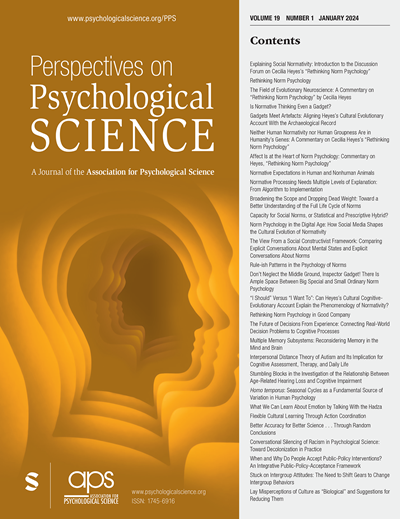Do Cognitive Functions Belong in the Hierarchical Taxonomy of Psychopathology Model? A Meta-Analysis
IF 8.4
1区 心理学
Q1 PSYCHOLOGY, MULTIDISCIPLINARY
引用次数: 0
Abstract
Cognitive dysfunction is essential to conceptualizing, defining, and assessing much of psychopathology. Despite this prominence, cognitive abilities are not included in the prevailing empirically based classification system: the Hierarchical Taxonomy of Psychopathology (HiTOP). This gap exists because the factor-analytic literature the HiTOP is based on has solely used reporter measures rather than neuropsychological tests needed to measure cognitive ability. Given HiTOP’s influence on research and clinical practice, the omission of cognitive functions from the model is consequential. This study aimed to determine how cognitive abilities fit into the empirical structure of psychopathology with a meta-analytic joint factor analysis. We pooled data from three published meta-analyses into a single correlation matrix of eight disorders from the认知功能是否属于精神病理模型的层次分类法?一个荟萃分析
认知功能障碍对许多精神病理学的概念化、定义和评估至关重要。尽管如此,认知能力并没有被包括在流行的基于经验的分类系统中:精神病理学层次分类法(HiTOP)。这一差距的存在是因为HiTOP所依据的因素分析文献仅仅使用了报告者的测量方法,而不是测量认知能力所需的神经心理学测试。鉴于HiTOP对研究和临床实践的影响,从模型中遗漏认知功能是必然的。本研究旨在通过荟萃分析联合因素分析来确定认知能力如何适应精神病理学的经验结构。我们将来自三篇已发表的荟萃分析的数据汇集到《精神疾病诊断与统计手册》中的八种疾病和七种认知功能的单一相关矩阵中。然后,我们利用探索性因子分析和跨层次的相关因子将一系列模型拟合到元分析相关矩阵中,以估计层次结构。模型的最高水平包括所有障碍和认知功能的强负荷的一般因素(中位数λ = |)。51|,范围= |。30|到|.64|)。最低的是三个超光谱:精神病和认知功能障碍、外化和情绪功能障碍。我们的研究结果表明,认知能力可以整合到HiTOP模型中,并为实现这一目标的下一步研究指明了可行的步骤。
本文章由计算机程序翻译,如有差异,请以英文原文为准。
求助全文
约1分钟内获得全文
求助全文
来源期刊

Perspectives on Psychological Science
PSYCHOLOGY, MULTIDISCIPLINARY-
CiteScore
22.70
自引率
4.00%
发文量
111
期刊介绍:
Perspectives on Psychological Science is a journal that publishes a diverse range of articles and reports in the field of psychology. The journal includes broad integrative reviews, overviews of research programs, meta-analyses, theoretical statements, book reviews, and articles on various topics such as the philosophy of science and opinion pieces about major issues in the field. It also features autobiographical reflections of senior members of the field, occasional humorous essays and sketches, and even has a section for invited and submitted articles.
The impact of the journal can be seen through the reverberation of a 2009 article on correlative analyses commonly used in neuroimaging studies, which still influences the field. Additionally, a recent special issue of Perspectives, featuring prominent researchers discussing the "Next Big Questions in Psychology," is shaping the future trajectory of the discipline.
Perspectives on Psychological Science provides metrics that showcase the performance of the journal. However, the Association for Psychological Science, of which the journal is a signatory of DORA, recommends against using journal-based metrics for assessing individual scientist contributions, such as for hiring, promotion, or funding decisions. Therefore, the metrics provided by Perspectives on Psychological Science should only be used by those interested in evaluating the journal itself.
 求助内容:
求助内容: 应助结果提醒方式:
应助结果提醒方式:


